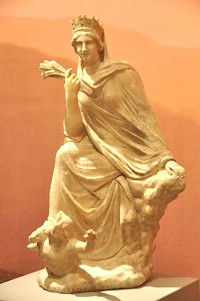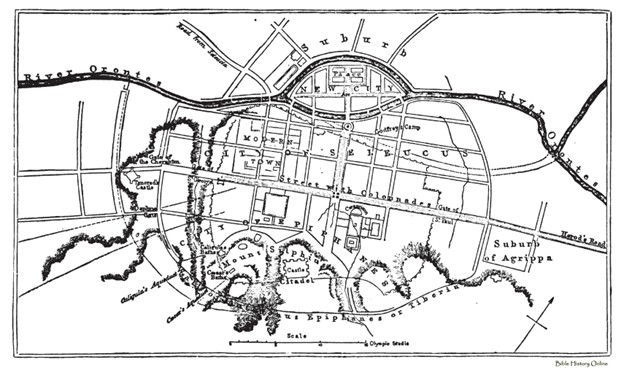Apostle Junia: Mission Journey from Antioch
- Elaine R Kelly

- Jul 21
- 6 min read
Updated: Sep 16
My upcoming historical fiction imagines the backstory of Junia, a woman in the Bible who is called an apostle. This series of articles describes some of the cities and people she visits in the fictional first mission journey Junia takes in my novel, Finding Her Voice from Broken to Bold: A Novel of Early Female Apostles.
Other Articles about Junia
Apostle Junia: Who Is She? Paul's description of Junia in Romans 16:7: Paul greets Junia as a female who Paul says was Paul's kindred, fellow captive, in Christ before Paul, and outstanding among the apostles.
Apostle Junia: Making Disciples with a carrot or a hammer?
Apostle Junia: Mission Journey from Antioch: meeting Andronicus in Syrian Antioch and beginning her first mission journey, taking Roman trading routes.
Apostle Junia in Colossae, Laodicea, Hierapolis.
Apostle Junia in Philadelphia, Sardis, and Smyrna.
Where Might Junia Have Gone?
Junia and Andronicus are greeted in Rome when Paul wrote Romans in the late AD 50s, when they are already known for their outstanding, likely extensive work as apostles. This novel is set in the late AD 40s, before and during Paul's first missionary journey. In Acts 13-14, Paul is described as going from Syrian Antioch to Cyprus, Perga, Pisidian Antioch, Iconium, Lystra, and Derbe. Since this novel tells Junia's story, and she is not described in Paul's journeys in Acts, I chose cities that Paul may not have visited.
My fiction imagines Junia meeting Andronicus, a Greek freedman and spice trader. Junia meets Andronicus in Syrian Antioch and joins him on a route based on the Roman roads and major trade routes. Antioch is a crossroads for several key land and sea trade routes. Roman Roads included the Via Maris, the King's Highway, and the Silk Road, allowing trade from China, India, Alexandria, and Persia.

Junia's Fictional First Missionary Journey:
Let's look at the cities Junia may have visited by following these major trade routes and the people she may have met.
They sail from Antioch to Perga, then travel by land through Colossae, Laodicea (Revelation 3:14-22), Hierapolis, Philadelphia (Revelation 3:7-13), Sardis (Revelation 3:1-6), and Smyrna (Revelation 2:8-11).

Syrian Antioch

The Place
Antioch was a wealthy, multicultural trade centre between Mount Silpius and the River Orontes[1]. Tyche of Antioch was a symbol of the city’s good fortune[2]. Antioch sent out Paul on his missions (Acts 13:1-3). Antioch was one of the first congregations established, likely by deacons who served with Stephen.
Antioch was a wealthy, multi-cultural city, criss-crossed with trade routes bringing people and goods from faraway places and cultures.
"Now those who were scattered because of the persecution that took place over Stephen travelled as far as Phoenicia, Cyprus, and Antioch, and they spoke the word to no one except Jews. But among them were some men of Cyprus and Cyrene who, on coming to Antioch, spoke to the Hellenists [Greeks] also, proclaiming the Lord Jesus" (Acts 11:19-20 NRSVUE)
Being a city with residents from many cultural backgrounds, it is no wonder that Antioch was the first congregation to preach the good news to Greeks. Since the Greeks were largely uncircumcised, it is no surprise that Antioch was targeted by legalistic Jews from Judea who taught that circumcision was required to be saved. Even Peter and Barnabas were swayed to show that Jewish and Gentile Christians could eat together (Galatians 2:11-14). Paul sharply debated with them (Acts 15:1-2).
The Jews in the New Testament referred to most Gentiles as "Greek", regardless of whether they were Canaanites, Syrians, Phoenicians, Nabateans, or other ethnicities. It seems to have been a form of slander rather than an accurate identification of language and culture. Jews of the time resented Greeks as former oppressors. Every year at Hanukkah, Jews remember how Maccabees led them in a successful revolt against the Greek Seleucid Empire. Jews of the day hated Greeks, resented the Hellenistic (Greek) influences, and called Greeks dogs (Matthew 15:21-28, Mark 7:24-30). Given this context, it is more evident why traditional Jews opposed offering Greeks the good news of the Jewish Messiah.
It is no wonder these Greek Christians had the ambition and wealth to sponsor Paul and Barnabas on their first mission journey, which was to go to primarily non-Jews (Acts 9:15, Acts 22:21, Galatians 2:8).
Antioch became one of the five most important cities of the early Christian Church. There were five major sees (jurisdictions overseen by a bishop) in early Christianity: Jerusalem, Antioch, Alexandria, Constantinople (today's Istanbul), and Rome. These five bishops formed a Pentarchy of Christian leadership until the 7th century, when the Muslim conquests overtook Jerusalem, Antioch, and Alexandria. The bishop of Constantinople remained the overseer of the Eastern Church, and Rome the overseer of the Western Church.
The People
The Syrian Antioch leaders were Nicolas of Antioch (Acts 6:5), Simon the Niger, Lucius of Cyrene, and Manaen (Acts 13:1). Antioch is where followers of Jesus were first called Christians, and where the good news was first shared with non-Jews. That’s why Jerusalem elders sent Barnabas to Antioch (Acts 11:22), and he recruited Paul (Acts 11:25).
My fiction imagines Joanna (Luke 8:3, 24:10) being biracial, with dark skin and Greek blood. Theophilus, Joanna's grandfather and surrogate parent, is a leading Jewish teacher of the law who opposes the followers of Jesus, hates Greeks, and ostracized her Greek father. Joanna was passing as Jewish, but when she revealed her Greek heritage and her belief in Jesus, her grandfather forced her to move to Syrian Antioch and go by her Greek name, Junia.
My novel imagines Junia struggling to act on her call to be an apostle and to teach followers of Jesus to accept Greeks and Jews as equals. Some oppose her message because she is a woman, and then she must teach followers of Jesus to accept women and men as equals.
Through a series of events, I imagine that eventually, the Antioch leaders commissioned Junia on her journey. She sails to Perga, where she briefly crosses paths with Paul, Barnabas, and John Mark. From there, John Mark leaves to find Peter, Paul and Barnabas go to Pisidian Antioch, and Junia and her group go to Colossae.

Conclusion
Junia was a woman who was in Christ before Paul, who was imprisoned for her faith, and became an outstanding apostle. It is possible that her first mission journey began from Syrian Antioch. Check out the other places she goes on her journey in my articles on Colossae, Laodicea, Hierapolis, Philadelphia, Sardis, and Smyrna.

How did a woman become an apostle? What barriers did she overcome in the patriarchal Roman world? What obstacles were there for women called to teach and evangelize in the emerging, early church? What role did Jesus' mother have in the early church? What did Peter's wife do when she joined her husband on his mission trips(1 Corinthians 9:5)? What were the women doing when Paul was on his mission trips (Acts 13:50)? What was the role of the women Paul credits as co-workers and sisters (Nympha, Apphia, Phoebe, Priscilla, Lydia, and others)?
How might Junia overcome the barriers to becoming an apostle, preacher, and teacher, and where might she have gone? These are the questions I examine in my fiction: Finding Her Voice.
Elaine Ricker Kelly Author is empowering women with historical fiction about women in the Bible and early church and Christian blogs about women in leadership, church history and doctrine. Her books include:
Forgotten Followers from Broken to Bold, Book 1, A Novel (2022)
The Sword: A Fun Way to Engage in Healthy Debate on What the Bible Says About a Woman's Role (2023)
Because She Was Called from Broken to Bold, Book 2, A Novel of the Early Church (2024)
Walk with Mara on Her Healing Journey: 21 Steps to Emotional Resilience (2024)
Finding Her Voice from Broken to Bold, Book 3, Acts of Early Female Apostles: A Novel (coming October 2025)
Sources:
[1] “Antioch”, Bible History, Accessed May 7, 2025, https://bible-history.com/ibh/Geography,+Plans,+Maps/Syria/Antioch.
[2] Jona Lendering, “Tyche of Antioch”, Livius, September 24, 2020, https://www.livius.org/articles/concept/tyche-of-antioch/.



Comments